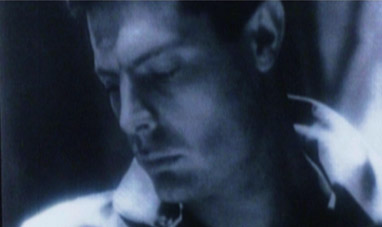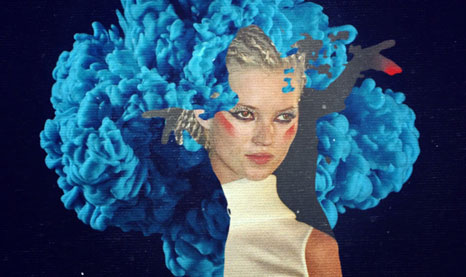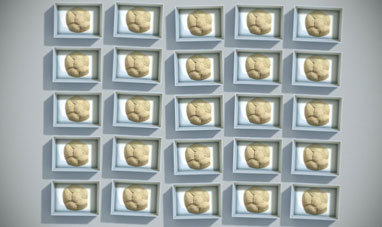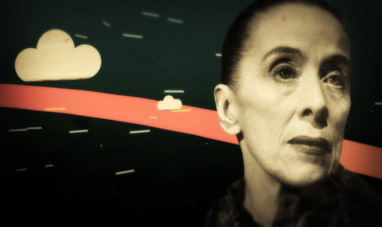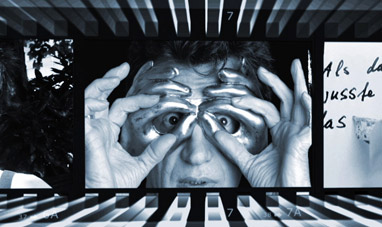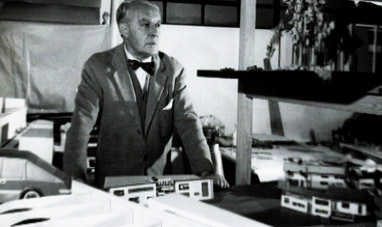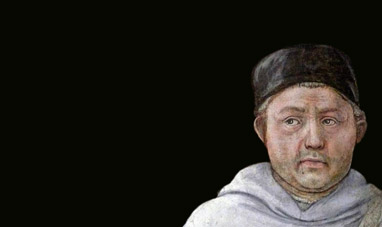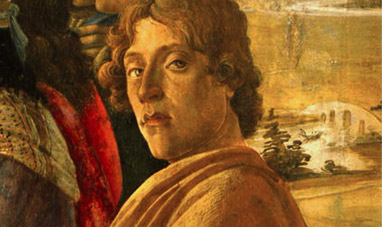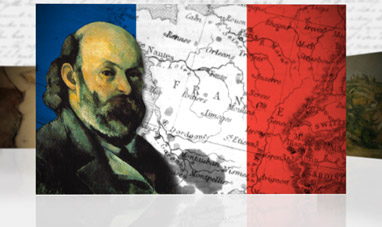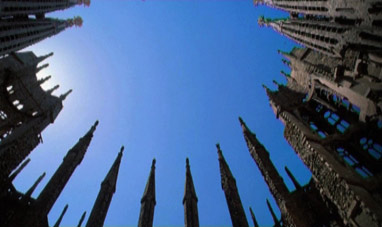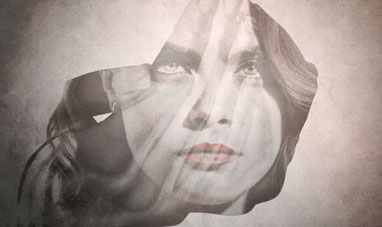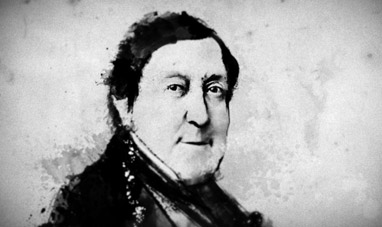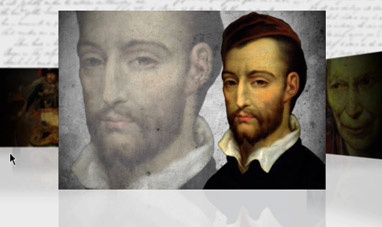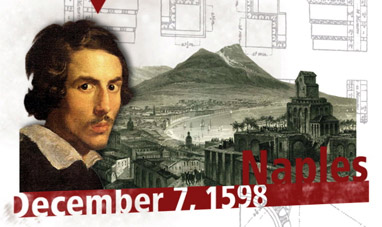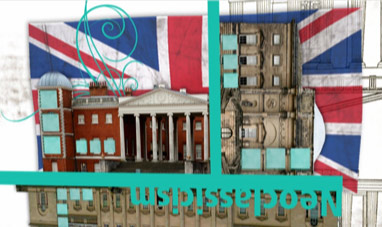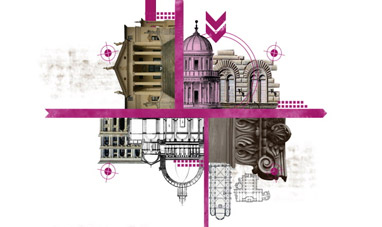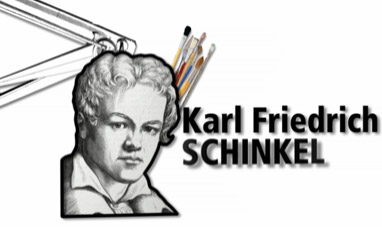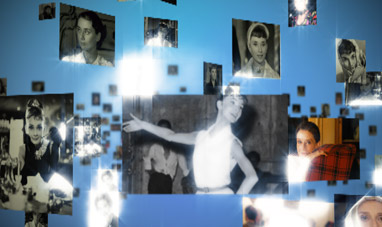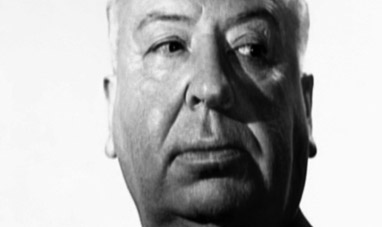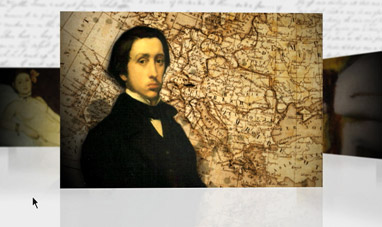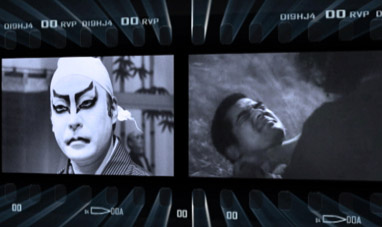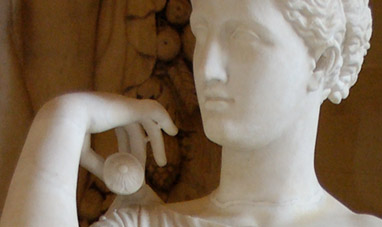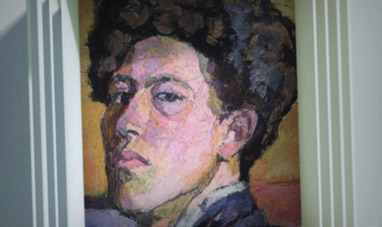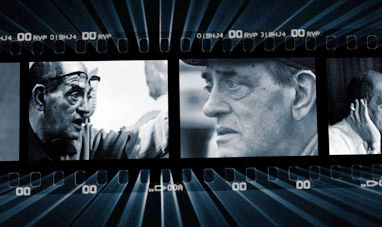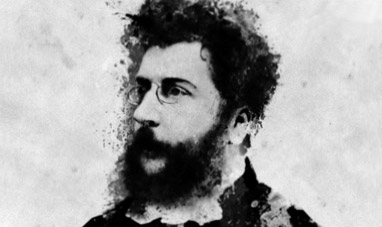Auguste Rodin was a sculptor active at the end of the 19th Century. He is considered one of the key protagonists of modern art.
Rodin was born in Paris on November 12, 1840. He showed artistic promise from a young age. After attending drawing and sculpture courses, he worked as an apprentice and decorator with established artists. He also began sculpting in the classical style. In 1875 he traveled to Italy where he was struck by the vitality and dramatic intensity of Michelangelo’s sculptures. From then on, Rodin’s work was infused with a new zeal. Back in Paris, he sculpted The Age of Bronze, a male nude highly celebrated for its realism and lifelike quality. Rodin became so well-known that the French Government commissioned him to paint the gates of the Musée des Arts Décoratifs in Paris. Inspired by Dante’s Divine Comedy, Rodin’s gates would be called the Gates of Hell.
Paolo and Francesca, star-crossed lovers and the subjects of the Inferno’s Fifth Canto, are among the recognizable figures in the artwork.
Rodin would spend the rest of his life working on the Gates, which he never finished. He made drawings and casts of potential figures that led to some of his most important sculptures. An early version of The Thinker can be seen as part of the Gates, and The Kiss came from an elaboration of a detail of the figures of Paolo and Francesca. Rodin’s style was very innovative for the times. He purposely left his figures ambiguous, thereby increasing their symbolism and expressive value. One particularly daring sculpture was The Walking Man, originally conceived in 1878 but cast in bronze many years later. It presents a headless, armless male figure walking, representing the pure act of movement.
Rodin was also commissioned to create a monument dedicated to citizens of Calais. During the Hundred Years War, the people of Calais had offered themselves to the enemy as hostages in order to end the English siege. Rodin designed a group of sculptures to be placed in front of the municipality of Calais. He plainly represented the 14th-century citizens of Calais meditating upon their suffering. Rodin wanted the statues to rest on the ground, without pedestals, bringing them closer to the contemporary inhabitants of Calais and emphasizing the humility of their sacrifice. To Rodin’s chagrin, the local authorities added a pedestal, giving the monument a more conventional appearance. Over the course of his career, Rodin dedicated several monuments to key figures in French culture, including the writers Victor Hugo and Honoré de Balzac. He also illustrated Charles Baudelaire’s The Flowers of Evil. Rodin spent the last years of his life in Meudon, where he died on Novemb
Rodin was born in Paris on November 12, 1840. He showed artistic promise from a young age. After attending drawing and sculpture courses, he worked as an apprentice and decorator with established artists. He also began sculpting in the classical style. In 1875 he traveled to Italy where he was struck by the vitality and dramatic intensity of Michelangelo’s sculptures. From then on, Rodin’s work was infused with a new zeal. Back in Paris, he sculpted The Age of Bronze, a male nude highly celebrated for its realism and lifelike quality. Rodin became so well-known that the French Government commissioned him to paint the gates of the Musée des Arts Décoratifs in Paris. Inspired by Dante’s Divine Comedy, Rodin’s gates would be called the Gates of Hell.
Paolo and Francesca, star-crossed lovers and the subjects of the Inferno’s Fifth Canto, are among the recognizable figures in the artwork.
Rodin would spend the rest of his life working on the Gates, which he never finished. He made drawings and casts of potential figures that led to some of his most important sculptures. An early version of The Thinker can be seen as part of the Gates, and The Kiss came from an elaboration of a detail of the figures of Paolo and Francesca. Rodin’s style was very innovative for the times. He purposely left his figures ambiguous, thereby increasing their symbolism and expressive value. One particularly daring sculpture was The Walking Man, originally conceived in 1878 but cast in bronze many years later. It presents a headless, armless male figure walking, representing the pure act of movement.
Rodin was also commissioned to create a monument dedicated to citizens of Calais. During the Hundred Years War, the people of Calais had offered themselves to the enemy as hostages in order to end the English siege. Rodin designed a group of sculptures to be placed in front of the municipality of Calais. He plainly represented the 14th-century citizens of Calais meditating upon their suffering. Rodin wanted the statues to rest on the ground, without pedestals, bringing them closer to the contemporary inhabitants of Calais and emphasizing the humility of their sacrifice. To Rodin’s chagrin, the local authorities added a pedestal, giving the monument a more conventional appearance. Over the course of his career, Rodin dedicated several monuments to key figures in French culture, including the writers Victor Hugo and Honoré de Balzac. He also illustrated Charles Baudelaire’s The Flowers of Evil. Rodin spent the last years of his life in Meudon, where he died on Novemb

